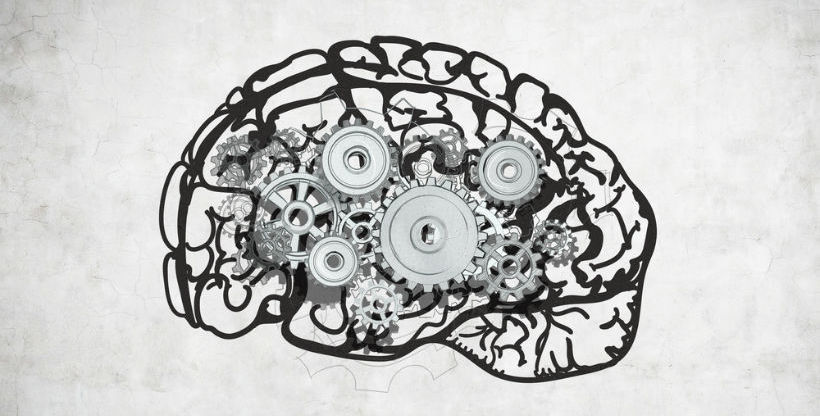Offering Effective Learning: How To Design To Help Working Memory
One of the largest constraints that learning designers and developers don’t realize that they have when working with instruction is the nature of our memory. Memory greatly impacts learnability (how well something we design can be learned), so understanding how to use design to help working memory is important.

Figure 1. Flow of information into memory and how each part functions.
Dr. Sweller, an educational psychologist who has advanced our knowledge of how instruction is impacted by memory describes this concept as human cognitive architecture, or how we integrate, process, and use knowledge. A simplified version of this is shown and described in Figure 1.
| Short-Term Memory (STM) | Working Memory (WM) |
Long-Term Memory (LTM) And Schema |
| Short-term memory (STM) has very limited capacity. It is responsible for brief information holding. | WM is often used synonymously with STM but STM simply holds information while WM actively processes it. They are believed to be separate systems. | Long-term memory (LTM) is a responsible for memory storage and is thought to have unlimited capacity and indefinite storage and retrieval. |
| Building instruction that uses WM well is a foundational instructional design task because if it isn’t used well, it is harder to learn. | Getting information into LTM and ready for use on-the-job is another critical instructional design task. | |
| We believe that information held in LTM are in schema, meaningfully organized units. Schemas make information storage and retrieval easier. An important purpose of instruction is to help people with less knowledge create appropriate schema. |
In Figure 1, you see that the flow of information into memory begins when our senses notice something and it enters STM for a few seconds. If WM doesn’t process it, it goes no further. How does WM process it? By paying attention to it and deciding what to do. We pay very little attention to most things and this is why we cannot remember them. Working memory must process or it cannot move on to LTM. LTM is where we store information and it is from where we retrieve information when we need to remember it.
When we forget something we used to remember, the information has either decayed (because the memory hasn’t been retrieved from LTM often) or it has been written over by a more recent memory that is similar. (I wrote about this here.)
Designing For Human Cognitive Architecture
Everything we learn is processed through working memory (WM). WM can only handle a few things at a time and it is slow. There is a reason for this, which Sweller explains, but the important things is that we cannot learn things that are brand new to us quickly. You may have heard the saying “5 +/- 2.” What that means is that early research told us this is how many pieces of new information WM can process at one time. New research says it may be less.
I hear trainers boast “Our training is like drinking from a firehouse”. Here’s the point: If you had to drink from a firehouse, you would die of thirst while also getting your face ripped off. :(
Similarly, like drinking from a firehouse, people will learn nothing and be in pain if you try to push tons of new content at them very quickly. (People with more expertise in the area of study can learn more quickly and I will explain this soon.) We must work within the constraints of human cognitive architecture, or human memory, because otherwise, we are not helping them learn.
Design Suggestions For Helping Working Memory During Instruction
I’m going to explain 3 of Sweller’s specific suggestions, along with some examples, of how we can design to help memory.
1. Split-Attention.
When we have multiple sources of information that can only be understood when they are put together, research says that we should put those sources together. Split-attention happens when information needs to be united in the same place or time to be understood.
Example:

Figure 2. Figure from P.Shank assessments workbook
Figure 2 comes from instruction I built in 2008 on aligning job tasks and results, learning objectives, assessments, and instruction. To prevent split-attention, the explanation of this graphic should be in the same location as (above, below, or beside) the graphic. If I used this graphic in a presentation, I should discuss the graphic while this slide is showing, not while I am showing another slide.
Another example is Figure 1. What would happen if the diagram was on one page, but the explanation was not adjacent? It would cause readers to refer back and forth to understand the diagram. Some readers would do this, but it would be harder to do than having them adjacent. Others would not take the time and the meaning might be lost.
The purpose for preventing split attention is to prevent people from having to hold information in WM for too long in order to understand something else.
Design takeaway: Review instruction to find pieces of instruction that need to be united (in the same place or time) so they are easier to understand.
2. Redundancy.
Research also shows that showing the same information in different forms/media can interfere with learning. Although this is counter-intuitive, the mental effort (cognitive load) of having to process multiple sources and compare them (to see if there is any new information and if they are truly the same) requires additional memory resources.
Sweller says we must make sure that all information is essential and not another way of presenting the same information. Which should you take out if you have multiple sources of the same information? He says to take out the least effective source.
Example:
Did Figure 1 require an explanation or could you have understood it on its own. (It’s interesting that I am causing split-attention by making you look at it now.) I am assuming that most people reading this would not have understood it on its own so I explained it. But I did more than explain it; I added additional information about each of the parts that is not in the graphic.
Here are some sources of redundancy that Sweller says generally result in increased mental effort:
- A spoken or textual explanation combined with graphics that are easy to understand on their own.
- Deep explanations after diagrams with distinct call-outs and a clear caption.
- Additional nice-to-know information that muddies the primary goal of the instruction.
I heard an excellent analogy at a conference I recently attended. Shannon Tipton said instructional content is like a Jenga game. If you can pull out any blocks (content) and it stays standing (the course and assessments work), they should be left out.
I should note that redundancy seems to still have some debate. Much research has verified the findings but some have not. I believe we should steer away from redundancy. In the cases where we feel a need to use redundancy, we should make sure to use the same wording so readers/listeners do not need to wonder if we are saying something different. This goes against writing-for-interest rules but instructional writing may need different rules. (This last part about using redundancy is my own opinion.)
Design takeaway: Review instruction to find redundancies. Ask which is the best version and delete redundancies. Re-review. If redundancies aren’t needed save revised version.
3. Element Interactivity.
Element interactivity is the number of interacting components that must be processed (by WM) at the same time to understand the material. If the instruction has low element interactivity, individual components can be processed without reference to other components. An example is how and when to wash hands to prevent foodborne illnesses (Figure 3). There are a few components to remember but it’s fairly simple.

Figure 3. Washing hands poster
If the instruction has high element interactivity, the individual components cannot be processed in isolation and understanding one depends on understanding others.
How to clean surfaces and food containers to prevent foodborne illnesses is much more complex than washing hands. There are many interactions between surface types, likely pathogens, and what can be used to kill pathogens that will not harm people.
Element interactivity is a critical design consideration when there are many components that must be considered simultaneously. It is one of the chief reasons why some content is hard to learn.
Design takeaway: Review instruction to analyze element interactivity. When high, reduce split-attention, redundancies, and other forms of extraneous (non-helpful) cognitive load. Consider pre-training vocabulary and concepts in advance.
Memory is a primary constraint when designing instruction; so, if you’ve made it this far, I’m grateful that you are also a learning geek and want to help people learn. I’ll be back next month to discuss more of Sweller’s suggestions of how to design to help working memory. I’d love to know if you have any insights or questions and how you intend to put these ideas into action. You can also post these on Twitter and we can discuss there (@pattishank and @elearnindustry).
References:
- Sweller, J. (2008). Human Cognitive Architecture. In J. M. Spector, M. D. Merrill, J. V. Merrienboer, & M.P. Driscoll (Eds.), Handbook of Research on Educational Communications and Technology 3rd ed., 369-381. New York, NY: Taylor & Francis Group.
- Sweller, J. (2005). Implications Of Cognitive Load Theory For Multimedia Learning. In R. E. Mayer (Ed.), The Cambridge Handbook of Multimedia Learning (pp. 19-30). New York, NY: Cambridge University Press.









